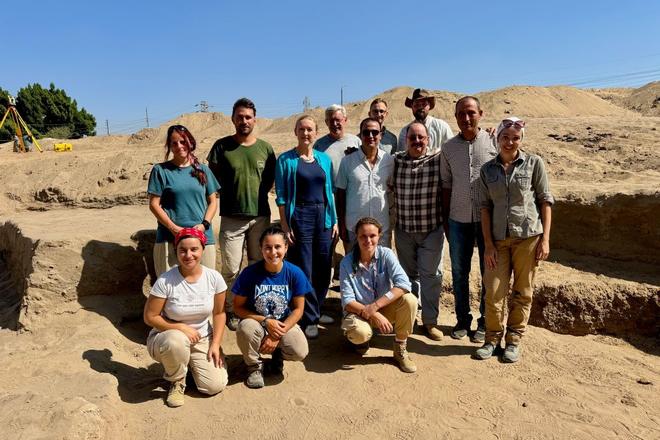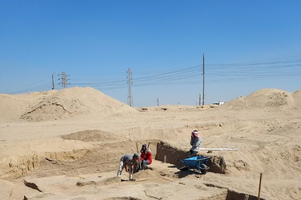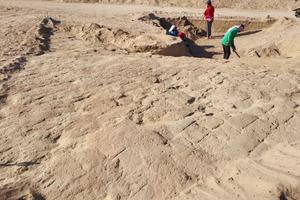Situated in the ancient Nile valley of Wadi Tumilat, the archaeological site of Tell el-Retaba lies on an important route between the Nile delta and Sinai Peninsula. During Pharaonic times, it was part of a system of fortresses that protected Egypt from various Asian and Beduin tribes. It also provided access to raw materials and water supplies.
A group of Slovak Egyptologists, as part of a joint Polish-Slovak mission, have been investigating the area since 2007. So far, the site has yielded finds dating back 3,800 years to the period of the rule of the Hyksos, a people of Levantine origin about whom little is known. The area was continually inhabited for the next 1,800 years.
"[The finds] have filled gaps in knowledge about the Hyksos, the rise of the New Kingdom around 3,550 years ago, biblical history, the fortifications, civil engineering, military logistics, fauna and flora, climate change, soil formation, trade in the eastern Mediterranean, art, religion, and other areas," Jozef Hudec of the Institute of Oriental Studies at the Slovak Academy of Sciences and head of the Slovak part of the team told The Slovak Spectator.
To stay up to date with what scientists in Slovakia or Slovak scientists around the world are doing, subscribe to the Slovak Science newsletter, which will be sent to readers free of charge four times a year.
A status symbol
This autumn, the group concluded its 14th season excavating the site in the eastern Nile delta. In addition to learning more about the fortress architecture, they also continued research on finds from previous seasons, including a considerable Hyksos grave, in the pit of which were found the remains of a buried donkey. This discovery is very significant, Hudec said, because while people might more readily associate camels with ancient Egypt, donkeys had been used for transportation and carrying loads long before the former had been employed for the same task.
"It was a status symbol, just like a Harley bike would be today. The find means that there were important and wealthy residents in Tell el-Retaba who could afford to take a donkey from those who outlived them. They probably wanted to use it in the afterlife, just like they did when they lived," explained Hudec.


 The Slovak team with the Slovak Ambassador to Egypt Lenka Miháliková (third from left). Jozef Hudec is fifth from left. (source: Veronika Verešová)
The Slovak team with the Slovak Ambassador to Egypt Lenka Miháliková (third from left). Jozef Hudec is fifth from left. (source: Veronika Verešová)


